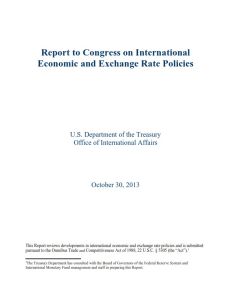Join getAbstract to access the summary!

Join getAbstract to access the summary!
U.S. Department of the Treasury Office of International Affairs
Report to Congress on International Economic and Exchange Rate Policies
US Treasury, 2013
What's inside?
The official US take on global economic and exchange rate policies in late 2013 looks at current trade imbalances.
Recommendation
This semiannual report from the US Department of the Treasury assesses changes in the economic and exchange rate policies of the US’s 10 most significant trading partners. Trade with those economies accounted for “72% percent of US merchandise” imports and exports in 2012. The report finds that no major US trading partner is currently manipulating its currency against the dollar, and – in its most newsworthy aspect – it cautions any country that might consider such manipulation to improve its balance of payments or to gain trade advantages. The report focuses on the trade and capital imbalances that currently affect global economic growth. It’s region-by-region appraisal focuses on such topics as the euro zone’s imbalances and the need for China to be more flexible about its exchange rate. The report gets to its real core when it explains how governments can adjust their economic policies to achieve strong and sustainable growth. getAbstract recommends this authoritative analysis to global executives, bankers, currency managers and anyone intrigued by the US’s take on issues affecting global trade, finance and the economy.
Summary
About the Author
The Department of the Treasury is the executive agency that promotes economic prosperity and ensures the financial security of the US. The Treasury is required to deliver semiannual reports covering the economic and currency policies of the US’s major international trading partners.
















Comment on this summary